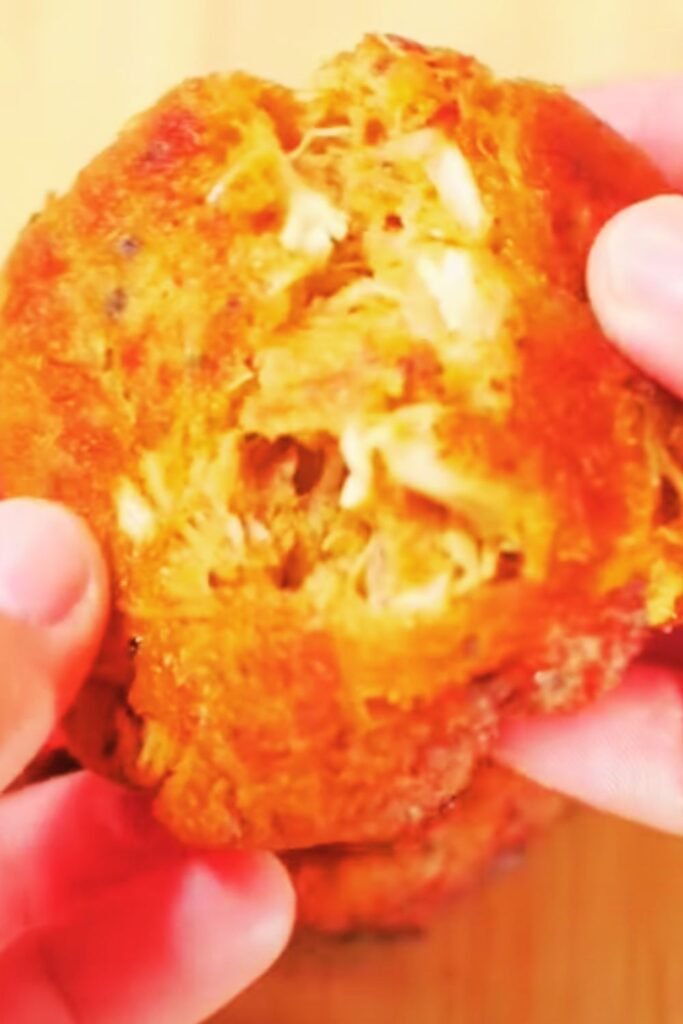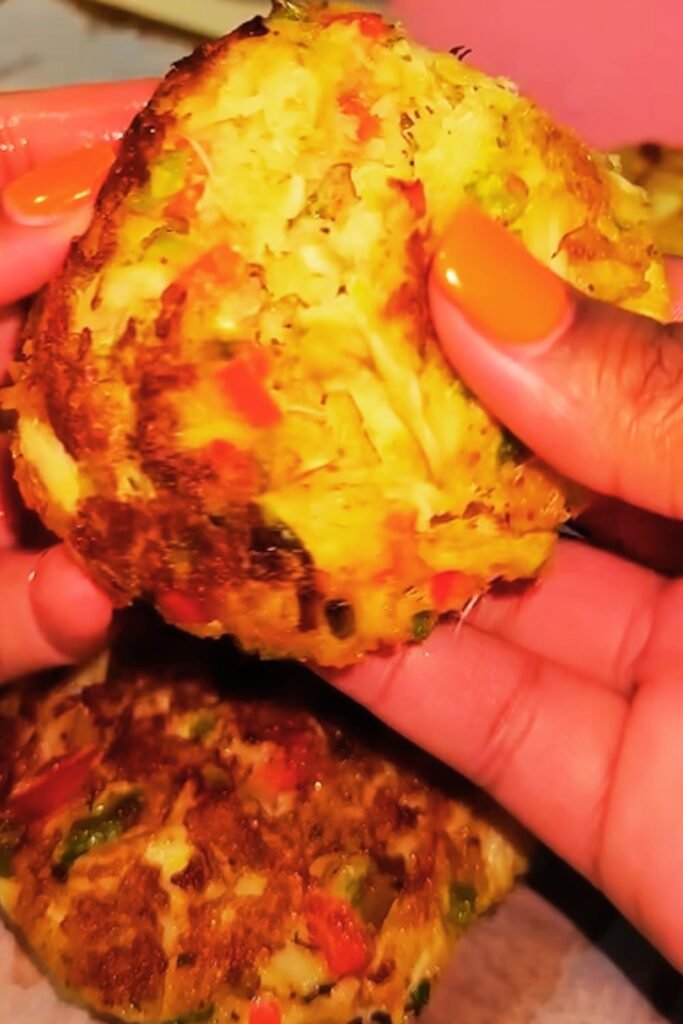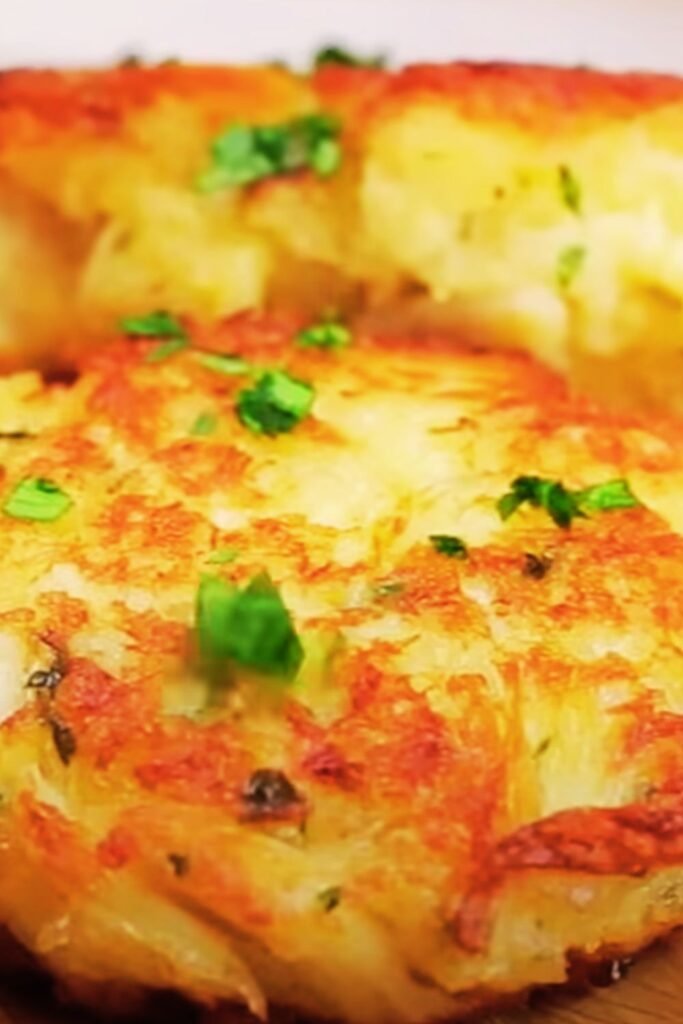There’s something magical about biting into a perfectly crispy crab cake – that satisfying crunch giving way to tender, flaky crab meat seasoned just right. I’ve been perfecting my crab cake recipe for years, and I’m excited to share my secrets for creating restaurant-quality crab cakes in your own kitchen without the fuss or lengthy preparation time.
These aren’t your average crab cakes loaded with filler. My quick and easy version celebrates the star ingredient – sweet, succulent crab meat – while incorporating just enough binding agents to hold everything together. The best part? You can have these beauties ready from start to finish in under 30 minutes.
What Makes the Perfect Crab Cake
Before diving into my recipe, let me share what I’ve learned makes the difference between mediocre and magnificent crab cakes:
Crab Meat Quality: The foundation of any great crab cake starts with quality crab meat. I always opt for fresh lump or jumbo lump crab meat when possible, though high-quality canned crab works wonderfully too.
Minimal Fillers: Too much breadcrumb or other fillers overshadow the delicate crab flavor. My recipe uses just enough to bind without overwhelming.
Proper Seasoning Balance: The seasoning should enhance, not mask, the natural sweetness of the crab.
Cooking Technique: Getting that golden, crispy exterior while maintaining a tender interior requires the right temperature and timing.
Essential Ingredients Breakdown
Let me walk you through each ingredient and why I choose them:
| Ingredient | Amount | Purpose | Substitution Options |
|---|---|---|---|
| Lump crab meat | 1 pound | Main protein, provides texture | Jumbo lump, backfin, or quality canned |
| Mayonnaise | 1/3 cup | Moisture and binding | Greek yogurt (reduce by half) |
| Large egg | 1 | Primary binder | Flax egg for vegan option |
| Panko breadcrumbs | 1/2 cup | Texture and binding | Regular breadcrumbs, crushed crackers |
| Dijon mustard | 1 tablespoon | Flavor enhancement | Yellow mustard, whole grain mustard |
| Worcestershire sauce | 1 teaspoon | Umami depth | Soy sauce, fish sauce |
| Old Bay seasoning | 1 teaspoon | Classic seafood seasoning | Cajun seasoning, seafood blend |
| Fresh lemon juice | 2 tablespoons | Brightness and acidity | Lime juice, white wine vinegar |
| Green onions | 2 stalks | Fresh flavor and color | Chives, regular onion (minced fine) |
| Red bell pepper | 1/4 cup | Sweetness and crunch | Yellow bell pepper, celery |
| Fresh parsley | 2 tablespoons | Freshness and color | Cilantro, dill |
| Salt | 1/2 teaspoon | Flavor enhancement | Sea salt, kosher salt |
| Black pepper | 1/4 teaspoon | Gentle heat | White pepper |
| Vegetable oil | 2 tablespoons | For pan-frying | Canola oil, avocado oil |
My Step-by-Step Crab Cake Method

Preparation Phase
I start by carefully picking through my crab meat, removing any shell fragments while being gentle not to break up the larger lumps too much. This attention to detail makes all the difference in the final texture.
Next, I finely dice my red bell pepper and green onions. The key here is uniform, small pieces that won’t overpower the delicate crab flavor but will add pleasant pops of color and texture.
Mixing the Perfect Blend
In a large mixing bowl, I combine the mayonnaise, egg, Dijon mustard, Worcestershire sauce, lemon juice, Old Bay seasoning, salt, and pepper. I whisk these wet ingredients together until completely smooth – this creates my binding base.
The secret to my crab cakes is how I fold in the crab meat. I add the picked crab meat to the bowl along with the diced vegetables and fresh herbs, then use a large spoon to gently fold everything together. I’m careful not to overmix, which would break up those beautiful crab chunks.
Finally, I sprinkle the panko breadcrumbs over the mixture and fold them in just until everything holds together. The mixture should be moist but not wet, and it should hold its shape when gently pressed.
Forming and Chilling
I divide the mixture into six equal portions and gently shape them into patties about 3/4 inch thick. Here’s a pro tip I learned from a chef friend: wet your hands slightly when forming the patties to prevent sticking.
While some recipes skip this step, I always chill my formed crab cakes for at least 15 minutes. This helps them hold together better during cooking and prevents them from falling apart in the pan.
Cooking Techniques That Work

Pan-Frying Method (My Preferred Approach)
I heat my oil in a large skillet over medium-high heat. The oil is ready when a small piece of breadcrumb dropped in sizzles immediately but doesn’t burn.
I carefully place the crab cakes in the pan, giving them plenty of space – overcrowding leads to steaming instead of that crispy crust we’re after. I cook them for 3-4 minutes on the first side without moving them, allowing that golden crust to develop.
When I flip them (and I only flip once), I look for that beautiful golden-brown color. The second side takes another 3-4 minutes. The internal temperature should reach 165°F for food safety.
Baking Alternative
For a lighter option, I sometimes bake these at 425°F for 12-15 minutes, flipping once halfway through. I brush the tops lightly with oil before baking to encourage browning.
Air Fryer Option
My air fryer works beautifully for crab cakes. I cook them at 375°F for 8-10 minutes, flipping once. The circulating air creates an incredibly crispy exterior.
Flavor Variations I Love
Over the years, I’ve developed several variations of my basic recipe:
Asian-Inspired: I replace the Old Bay with a mixture of sesame oil, soy sauce, and a touch of sriracha. I also add minced ginger and use cilantro instead of parsley.
Mediterranean Style: I incorporate sun-dried tomatoes, fresh basil, and a pinch of oregano. A squeeze of lemon and some capers make this version sing.
Spicy Cajun: I amp up the heat with cayenne pepper, paprika, and a dash of hot sauce mixed into the base.
Herb-Heavy: Sometimes I go wild with fresh herbs – dill, chives, tarragon, and parsley create a bright, garden-fresh flavor.
Serving Suggestions and Accompaniments

I’ve served these crab cakes countless ways, and here are my favorite approaches:
Classic Presentation: I serve them on a bed of mixed greens with my homemade remoulade sauce, lemon wedges, and a side of crispy sweet potato fries.
Sandwich Style: They make incredible crab cake sandwiches on brioche buns with lettuce, tomato, and a spread of spicy mayo.
Elegant Dinner: I pair them with garlic mashed potatoes, steamed asparagus, and a light lemon butter sauce.
Brunch Special: Topped with a poached egg and hollandaise sauce, they transform into an indulgent brunch dish.
My Favorite Sauces and Accompaniments
| Sauce Type | Main Ingredients | Flavor Profile | Best Pairing |
|---|---|---|---|
| Classic Remoulade | Mayo, mustard, capers, herbs | Tangy, creamy | Traditional serving |
| Spicy Aioli | Mayo, garlic, sriracha, lemon | Creamy with heat | Asian-inspired cakes |
| Lemon Herb Butter | Butter, lemon, fresh herbs | Rich, bright | Elegant dinners |
| Avocado Crema | Avocado, lime, cilantro, yogurt | Fresh, cooling | Spicy variations |
| Tartar Sauce | Mayo, pickles, capers, lemon | Classic, tangy | Casual dining |
Storage and Make-Ahead Tips
One of the things I love about this recipe is how well it adapts to meal prep. I can form the patties up to 24 hours ahead and keep them covered in the refrigerator. They actually benefit from this extra chilling time.
For longer storage, I freeze the uncooked patties on a baking sheet, then transfer them to freezer bags once solid. They keep for up to three months frozen. I cook them directly from frozen, adding an extra minute or two to each side.
Leftover cooked crab cakes store well in the refrigerator for up to three days. I reheat them in a 350°F oven for about 10 minutes to restore their crispiness.
Nutritional Benefits
These crab cakes aren’t just delicious – they’re also nutritionally impressive. Crab meat is an excellent source of high-quality protein, containing all essential amino acids. It’s also rich in vitamin B12, zinc, and selenium.
Each serving provides approximately:
- 280 calories
- 25 grams of protein
- 12 grams of healthy fats
- 8 grams of carbohydrates
The combination of protein and healthy fats makes these satisfying and supportive of stable blood sugar levels.
Troubleshooting Common Issues
Through my years of making crab cakes, I’ve encountered and solved most common problems:
Cakes Falling Apart: This usually means not enough binding agent or the mixture is too wet. I add a bit more egg or reduce the liquid ingredients.
Too Dense: Overmixing breaks down the crab meat and creates a dense texture. I always fold gently and minimally.
Bland Flavor: Don’t skip the seasoning! Crab meat needs adequate salt and acid to shine. I taste the mixture before forming patties and adjust as needed.
Soggy Bottom: Make sure your oil is hot enough before adding the cakes, and don’t overcrowd the pan.
Questions & Answers
Q: Can I use imitation crab meat for this recipe? While I always prefer real crab meat for the best flavor and texture, imitation crab can work in a pinch. Just be aware that it’s saltier and has a different texture, so you may need to adjust the seasoning accordingly.
Q: What’s the best type of crab meat to use? I recommend jumbo lump or lump crab meat for the best texture and flavor. Backfin crab meat works well too and is more budget-friendly. Avoid using claw meat alone as it can be stringy, though a small amount mixed with lump meat adds good flavor.
Q: How do I know when my crab cakes are done cooking? The exterior should be golden brown and crispy, and the internal temperature should reach 165°F. They should feel firm when gently pressed and shouldn’t give or feel squishy in the center.
Q: Can I make these crab cakes gluten-free? Absolutely! I substitute the panko breadcrumbs with gluten-free breadcrumbs, crushed gluten-free crackers, or even ground almonds for a different flavor profile.
Q: Why do my crab cakes taste fishy? This usually indicates the crab meat isn’t fresh. Always smell crab meat before using – it should smell like the ocean, not fishy. Also, make sure to drain canned crab meat well and pat it dry.
Q: Can I grill these crab cakes? Yes, but I recommend chilling them well first and using a fish basket or foil to prevent them from falling through the grates. Cook over medium heat for about 4-5 minutes per side.
Q: What’s the secret to getting a crispy exterior? The key is having the right oil temperature (medium-high heat), not overcrowding the pan, and not moving the cakes once they’re in the pan until it’s time to flip. The panko breadcrumbs also help create that perfect crunch.
Q: How far ahead can I prepare these? I can prepare the mixture and form the patties up to 24 hours ahead. For best results, I cover them and refrigerate until ready to cook. They actually hold together better after chilling.
Q: Can I bake these instead of frying? Definitely! I bake them at 425°F for 12-15 minutes, flipping once. I brush the tops with a little oil to help with browning. They won’t be quite as crispy as pan-fried, but they’re still delicious and lighter.
Q: What should I serve with crab cakes for a complete meal? My go-to sides include a fresh salad, roasted vegetables, rice pilaf, or sweet potato fries. For a more elegant presentation, I like to serve them with garlic mashed potatoes and steamed asparagus.
Making perfect crab cakes at home doesn’t have to be complicated or time-consuming. With quality ingredients, gentle handling, and the right cooking technique, you can create restaurant-worthy results in your own kitchen. I hope my recipe becomes a favorite in your household like it has in mine. The key is to let that beautiful crab meat shine while providing just enough support to hold everything together in crispy, golden perfection.